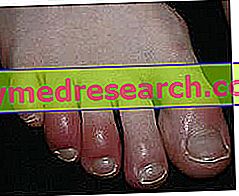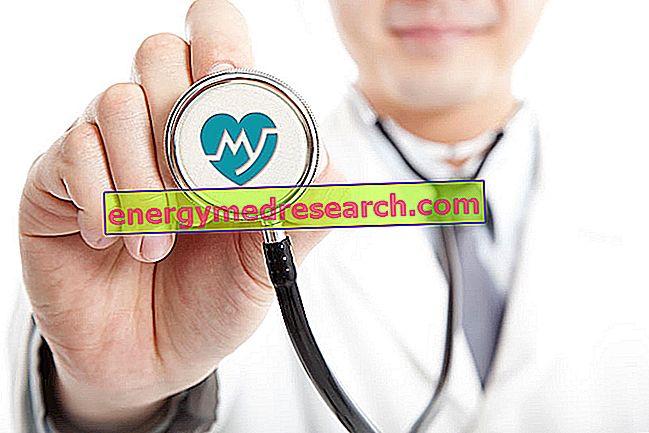Definition
Venous insufficiency is a pathological disorder of the circulation, in which the veins do not carry the right amounts of blood from the extremities to the heart.
Venous insufficiency can be related to pathological changes of the veins (stasis dermatitis, deep vein thrombosis, varicose veins) or functional overloads to which they are subjected (eg lymphedema, postural alterations, etc.).
But what symptoms does venous insufficiency cause? How is it diagnosed? Is it a treatable disease?
Signs and symptoms
The symptoms of venous insufficiency are quite variable: some patients complain of a simple swelling at the level of the legs, while for others the disorder can even become disabling, to the point of seriously compromising the quality of life.
The clinical picture of patients suffering from venous insufficiency can be characterized by one or more of the following symptoms:
- Dark spots appear on the skin
- Cramps in the calves (especially during night rest) → the frequency of cramping pain compromises the quality of sleep, negatively affecting normal daily activities (drowsiness during work, irritability, loss of attention, etc.).
- Dilation of superficial veins
- Pain at an ectatic (dilated) or varicose vein
- Persistent edema at the level of the affected limb → peripheral edema tends to vanish in an elevated position (lying position)
- Phlebitis: 60% of patients with venous insufficiency undergo phlebitis (inflammation of superficial veins)
- Tingling in the legs
- Swollen legs and swollen ankles
- Hyperpigmentation of the skin of the lower limbs
- Thickening of the skin (in the area affected by venous insufficiency) → we observed that venous insufficiency denies the correct transport of oxygen and nutrients to the various districts. This condition appears to be due to an exaggerated fibrin deposit around the capillaries; and it is the exaggerated accumulation of fibrin that can create hardening and prominence in adjacent tissues.
- Purple → venous insufficiency is a risk factor for the formation of small hematomas on the skin, including purpura
- Itching in the joint
- Sensation of heaviness in the legs
- Telangiectasias, expression of a slowing of the blood flow and of the presence of varicose veins, represent pathological dilations, exaggerated and abnormal of the veins, which take a tortuous course
- Deep vein thrombosis: in addition to being a probable cause of venous insufficiency, deep vein thrombosis is a possible complication of phlebitis, in turn due to the difficult venous return to the heart.
- Skin ulcers: in America, about one million individuals are affected by skin ulcerations dependent on venous diseases, including venous insufficiency playing a leading role.
- Varicose veins: an extremely recurrent symptom in patients suffering from venous insufficiency.
Some symptoms - heaviness, swelling / tension in the legs and pain along a varicose vein - can be accentuated in some precise circumstances: pregnancy, prolonged standing (standing position), menstrual cycle.
Complications
The increase in intracapillary pressure that characterizes venous insufficiency can cause:
- Increased risk of bacterial cellulite
- Dystrophy of the skin: it is a degenerative disorder of the skin, which appears dry (cutaneous xerosis), wrinkled and not very elastic
- ischemia
- Skin ulcerations
- Varicoflebite: formation of a secondary thrombus arising on varicose veins.

Diagnosis
The diagnosis of venous insufficiency consists in direct medical observation of the lesions (objective examination) and in the anamnesis (collection of symptoms reported by the patient). Sometimes, the doctor recommends an ecodoppler, in order to evaluate the functionality of the veins and the possible morphological compromise.
Important differential diagnosis with other diseases characterized by similar symptoms:
- Contact allergy
- Basal cell carcinoma
- Bacterial cellulite
- Stasis dermatitis
- Erysipelas
- Skin manifestations of cardiac / renal diseases
- Telangiectasia
- Trauma ulcers
- Varicose veins
| Clinical classification of venous insufficiency | |
| Class 0 | Absence of visible or palpable clinical signs of venous disease |
| Class 1 | Presence of telangiectasias or reticular veins |
| Class 2 | Presence of varicose veins |
| Class 3 | Presence of edema |
| Class 4 | Trophic disorders of venous origin: pigmentation, eczema, hypodermitis |
| Class 5 | As class 4 with healed ulcers |
| Class 6 | As class 4 with active phase ulcers |
Care
As for the vast majority of diseases, even in venous insufficiency the treatment depends on the triggering cause. When possible, medical-pharmacological intervention aims to correct the underlying anomaly; otherwise, the main goal of treatment is to alleviate symptoms, in order to improve the quality of life of those suffering from it.

PRACTICAL REQUIREMENTS
First of all, it is important to manage the patient's clinical picture, through the improvement of lifestyle and eating habits, which are often incorrect. Let us remember, in fact, that both obesity and sedentary life contribute to accentuating the symptoms of venous insufficiency and, sometimes, even triggering the pathology itself. For this purpose it is necessary to instruct the patient on the need to practice constant and regular physical exercise, and on the importance of following a healthy and balanced diet, in full respect of what is dictated by food education.
Other useful measures to manage venous insufficiency include:
- use of elastic stockings / compression bandages, suitable for relieving swelling in the legs and reducing pain;
- avoid staying in static positions for long periods: subjects who, for work reasons, are forced to remain seated for many hours, should move their limbs from time to time, in order to favor the return of blood to the heart;
- avoid staying upright, almost motionless, for a long time;
- avoid staying in hot environments, high humidity, for long periods: such behavior favors vasodilation;
- application of creams or ointments with a capillary-protective, anti-edema and decongestant action: the preparations formulated with extracts of Sweet Clover, Red vine, Horsetail, Anise, Marjoram, Witch Hazel and Ginkgo biloba are particularly suitable.
Putting these simple measures into practice reduces the risk of venous insufficiency in predisposed patients, and speeds healing in affected individuals.
For further information: read the article on remedies for venous insufficiency.
DRUGS FOR THE TREATMENT OF VENOUS INSUFFICIENCY
When the measures and the precautions described above are not able to prevent or remedy the venous insufficiency, it is possible to follow a pharmacological therapy. The active ingredients most used for this purpose are:
- Anticoagulant drugs with topical application: they promote blood circulation on the occasion of venous insufficiency;
- Injection of sclerosing substance;
- Phlebotonic drugs: increase the tone of the venous wall, consequently reducing the feeling of fatigue and heaviness in the legs;
- Profibrinolytic drugs, useful for dissolving the accumulations of fibrin collected in varicose veins.
SURGICAL INTERVENTION
When venous insufficiency is associated with severe skin ulcers, pathological thickening of the skin (lipodermatosclerosis) and disabling pain in the legs, surgery is conceivable:
- VALVULOPLASTICS: involves the repair of one or more valves of the circulatory system altered by pathological conditions, without however resorting to their replacement with a prosthesis.
- REMOVAL OF THE MISSED VENOUS PORTION with subsequent reconnection of the upstream and downstream parts of the excision → indicated in case of venous insufficiency dependent on varicose veins
- ABLATION WITH RADIOFREQUENCY: surgery that, thanks to radiofrequency energy, allows to heat the wall of the varicose veins involved in venous insufficiency. It is possible to access the vein by a small cut generally performed above the knee. With the aid of ultrasound, it is possible to insert a catheter into the vein involved in the pathology. Radiofrequency energy is transmitted inside this catheter (thanks to a special probe or source): the energy subjects the vein to heating, which damages the walls by closing and blocking it. At this point the blood will naturally be redirected to a collateral circle, flowing into one of the healthy veins.
- LASER THERAPY: similar to the previous intervention, laser therapy also uses an ultrasound guide and involves inserting a catheter into a vein. A laser beam, which is passed through the catheter, releases the energy needed to heat the wall of the varicose vein responsible for venous insufficiency until occluding it. Subsequently, the blood will naturally be redirected to one of the healthy veins through a collateral circle.
Both radiofrequency ablation and laser therapy can create bothersome side effects, even if reversible: small hematomas, skin burns, tingling in the legs and minor nerve injuries. Both interventions produce exceptional results in the treatment of venous insufficiency.



